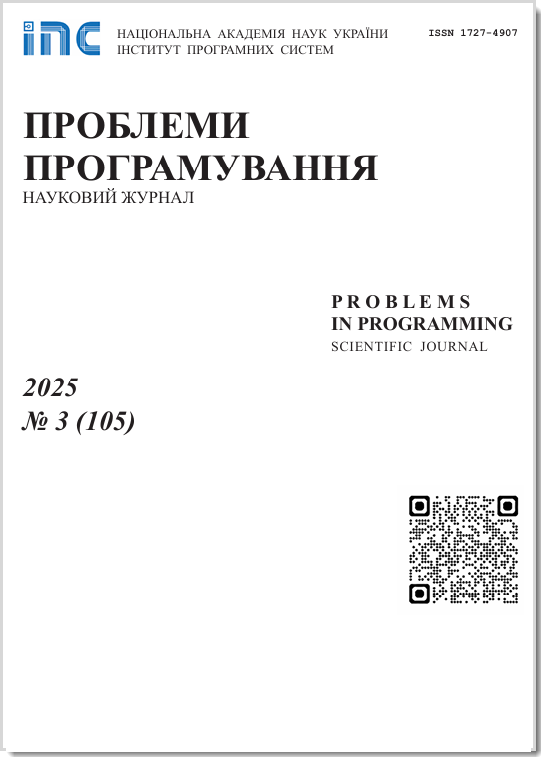Application of neural networks in OLAP-systems
Abstract
The article highlights the main characteristics of OLAP systems that perform online analytical data processing. These systems, based on OLAP technology, are widely used both in government agencies and in private ones. The main characteristics, features and structure of OLAP systems are mentioned. The article emphasizes that OLAP is a data warehousing tool. OLAP allows analysts to explore and navigate a multidimensional structure of indicators called a data cube or OLAP cube. Indicators (measures) of OLAP cubes play an important role in the decision-making process. To solve some problems, these measures often need to be classified or clustered. Moreover, empty measures are common in OLAP cubes. Empty measures can present due to nonexisting facts in data warehouse or due to empty cells which are unfilled in by mistake. The presence of empty measures negatively impacts strategic decision making. Unfortunately, OLAP itself is poorly adapted for forecasting empty measures of data cubes. Over the years, researchers and analysts have tried to improve the decision-making process in OLAP systems and add forecasting and other options to OLAP applications. Today, in the era of Industry 4.0, with the availability of big data, there is a need to apply new technologies to solve such problems. These technologies include neural networks. The article examines the problem of integrating OLAP and a neural network. In this regard, the article provides information about neural networks: information about their properties, types, as well as their capabilities. The article shows the possibility and advantages of integrating OLAP and neural network. It mentions that in the case of big data, the integration of OLAP and neural networks is very effective for solving problems of classification, clustering and prediction of empty measures of OLAP cubes. An architectural and technological model for integrating OLAP and neural networks is presented. It is noted what types of neural networks can be used to solve the problems of classification, clustering and forecasting specified in the model.
Prombles in programming 2024; 2-3: 367-374
Keywords
Full Text:
PDFReferences
Sh. Iskanderova, The impact of artificial intelligence on the modern world, in: Science and Education Scientific Journal (2023), Impact Factor 3.848. Vol. 4, issue 4, pp. 564-570. [in Russian].
L. Yunusova, A. Magsumova, Clustering using neural networks and searching for dependencies, 2019. Accessed: 22.01.2024. [in Russian].
M. Artikova, Sh. Rasulova, Data classification using neural networks, in: Scientific Collection «InterConf»: Scientific Goals and Purposes in XXI Century, 2021, (78), pp. 403-409. [in Russian].
What is Online Analytical Processing (OLAP)? [in Russian].
R. M. Alguliyev, G. Ch. Nabibayova, A. M. Gurbanova, Development of a Decision Support System with the use of OLAP-Technologies in the National Terminological Information Environment, in: International Journal of Modern Education and Computer Science (IJMECS) (2019). Vol.11, no. 6, pp. 43-52. CrossRef
E.F Codd, S.B. Codd, C.T. Salley, Providing OLAP (on-line Analytical Processing) to User-analysts: An IT Mandate, 1993.
Main characteristics of OLAP systems, 2020. [in Russian].
W.H. Inmon, Building the Data Warehouse, John Wiley & Sons, 2005, p. 596.
W. McCulloch, W. Pitts, A logical calculus of the ideas immanent in nervous activity, in: Bulletin of Mathematical Biology (1943), no 5, pp. 115-133. CrossRef
F. Rosenblatt, The perceptron: a probabilistic model for information storage and organization in the brain, Psychological Review (1958), 65(6), pp. 386-408. CrossRef
Kohonen map.
K.-L. Du, Clustering: A neural network approach, in: Neural Networks (2010), vol. 23, issue 1, pp. 89-107. CrossRef
Kohonen neural network, self-organizing maps, learning, 2022. [in Russian].
Kumar K., Krishna R, Kumar De S. Fuzzy OLAP Cube for Qualitative Analysis / Proceedings of the 3rd International Conference on Intelligent Sensing and Information Processing (ICISIP), 2005, pp. 290-295. CrossRef
V. Oreshko, Data classification using neural networks, 2021. [in Russian].
M. Gulesian. Using Neural Networks and OLAP Tools to Make Business Decisions, 2008.
W. Abdelbaki, R. Messaoud, S. Yahia, Neural-Based Approach for Extending OLAP to Prediction, in: Proceedings of science conference Data Warehousing and Knowledge Discovery (DaWaK 2012), Springer Verlag Berlin Heidelberg, 2012, pp. 117-129. CrossRef
W. Abdelbaki, S. Yahia, R. Messaoud, Modular Neural Networks for Extending OLAP to Prediction. Book Transactions on Large-Scale Data- and Knowledge-Centered Systems XXI, Springer Nature, 2015, pp. 73-93. CrossRef
Neural networks, perceptron. [in Russian].
DOI: https://doi.org/10.15407/pp2024.02-03.367
Refbacks
- There are currently no refbacks.









